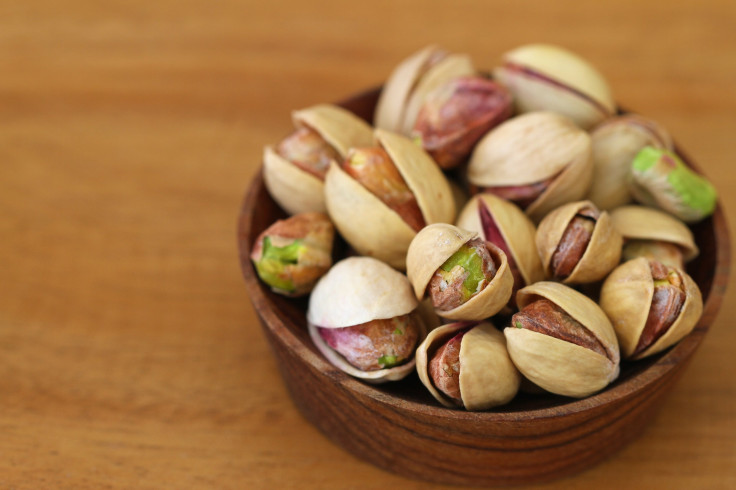Regularly Eating Pistachios Might Help Reduce Blood Sugar Levels, Diabetes Risk

New research out of Spain shows that people with prediabetes might be at a lower risk of developing diabetes if they eat pistachios regularly.
Someone with prediabetes has higher blood sugar levels than a normal healthy person, but the levels aren’t high enough yet to be categorized as type 2 diabetes. Though people with prediabetes have a high risk of developing type 2 diabetes, they still have a chance to revert their unhealthy lifestyle and avoid the chronic disease.
In the study, researchers found that people with prediabetes who ate 2 ounces of pistachios every day experienced significant drops in blood sugar and insulin levels. They also saw an improvement in insulin and glucose processing. Some of the participants also experienced reduced inflammation.
“This particular study builds on previous research on pistachios,” Dr. Joan Sabate, a professor of nutrition and epidemiology at the School of Public Health at Loma Linda University in California, who wasn’t part of the Spanish study, told Reuters Health. “There are some indications that eating pistachios on a regular basis lowers fasting glucose and lowers insulin and hormone ratio, which is particularly relevant in prediabetic subjects because unless they do a change in lifestyle they will end up being diabetic. So the fact that eating nuts on a regular basis seems to improve some of the critical parameters is very relevant.”
The Power of Nuts
Pistachios in particular are rich in vitamin B6, which can help keep your hormones in check. They also contain lutein and zeaxanthin, antioxidants that protect eyes, and are are rich in potassium and fiber. But they’re not the only nuts that have health benefits.
“Although pistachios were examined in this work, I believe that any beneficial effects on glucose metabolism are shared by all nuts, as they have a general composition with lots of bioactive compounds liable to beneficially affect biological pathways leading to insulin resistance and diabetes,” Dr. Emilio Ros, director of the Lipid Clinic of the Endocrinology and Nutrition Service at Hospital Clinic In Barcelona, said. Walnuts, peanuts, pecans, hazelnuts, and even macadamia nuts are all high in protein, fiber, antioxidants — and some good fats as well. Nuts are also notoriously good for your cardiovascular health.
One of the reasons why the participants in the Spanish study reduced their diabetes risk is because eating plenty of nuts in general can provide your body with much needed protein, fiber, and “healthy” fats that can curb your appetite, and prevent you from reaching for higher-fat snacks like chips or fries. Obesity is the number one risk factor for diabetes, so finding ways to keep your weight down will be your number one shield from the disease. Pistachios can curb your cravings while providing you with critical nutrients.
Source: Hernández A, Salas-Salvadó J, Balrdich-Mora M, Juanola-Falgarona M, Bulló M. “Beneficial Effect of Pistachio Consumption on Glucose Metabolism, Insulin Resistance, Inflammation, and Related Metabolic Risk Markers: a Randomized Clinical Trial.” Diabetes Care, 2014.



























